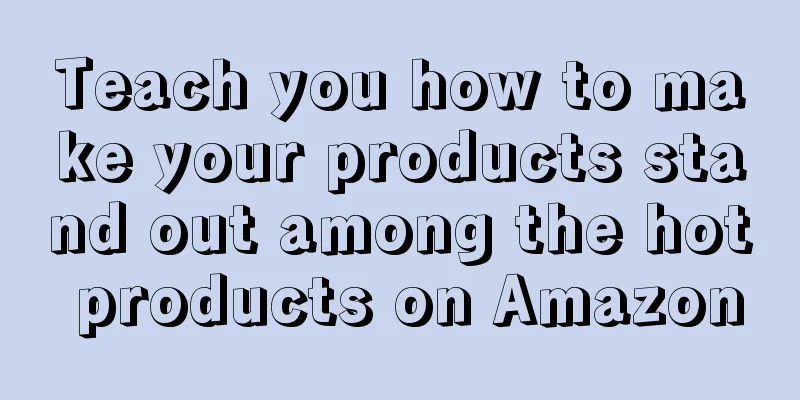Is “Keywords on the homepage in 3 days” reliable?

|
Quickly promote the 15th article outside the site I believe that everyone is familiar with the following paragraph: "Keywords on the homepage: Generally, it takes 3-10 days to get there. Check the word quotation. The price is not expensive. Three-day warranty. Payment will be made after success. It is a first-hand source. If your product has no traffic, you can consider keywords on the homepage. You can get huge natural traffic, thereby bringing more natural conversions." That’s right, you can see a large number of similar advertisements in seller groups and in the friend circles of agents and service providers. Before we figure out whether this is reliable, let us first learn two terms, click-through rate (CTR) and conversion rate (CR) . Click-through rate (CTR) = click/exposure. The lower the click-through rate, the more people see your product, but no one clicks on it. Generally speaking, the further back your product is placed, the higher the click-through rate will be, and the further forward your product is placed, the lower the click-through rate will be. Conversion rate (CR) = number of transactions/clicks. The lower the conversion rate, the more it means that some people click on and see your product, but no one buys it. Well, now that we know the meaning of these two words related to Amazon’s algorithm, let’s go back and analyze fake orders. I won’t talk about how veteran sellers fake orders and fake keywords, as it would be a bit of a rip-off. I will only talk about the specific performance of the process of putting new products on the homepage using pure brushing and single brushing (the above advertisement says 3-10 days, this time is definitely not enough to leave a review) with keywords: When a new product is put on the shelf and keyword search is performed, the product position will definitely be at the back. The exposure number at this time is extremely low, so those who are placing fake orders will definitely click on it, and the click-through rate will be very high at this time. Since it is a fake order, people will buy it when they click on it, so the conversion rate can even be as high as 100%. Then, Amazon will provide more natural traffic to products with high conversion rates, which means that your products will continue to climb up at a very rapid speed. However, as the number of exposures to your product increases, your click-through rate is decreasing (if your main image is well done, the rate of decrease may be slower). I believe every merchant knows what buyers need to look at before they finally place an order. At least you yourself will go shopping, and you know what makes you pay. Well, simply placing a large number of fake orders and quickly rushing to the front page without keeping up with other factors that prompt natural buyers to place orders will quickly reduce the click-through rate (CTR) and conversion rate (CR), which will cause your product to fall off the front page or even later. That’s why those advertisements say that the quality guarantee is three days. It makes sense, but it can’t keep you on the front page stably. Once you get on the homepage and then fall off, it will be extremely difficult to get back on the homepage. Amazon believes that you do not have the ability to stabilize the conversion rate (CR). If you place fake orders in the early stage, Amazon will also earn income. It can allow you to do so, but if you cannot provide a stable conversion rate (CR), Amazon will not be able to obtain stable and continuous income, and it will no longer be willing to support you in terms of traffic. So, is it really reliable to use the method of simply brushing orders to get keywords on the homepage? The answer is of course unreliable! So what should you do if you want to put your keywords on the homepage? 1. First of all, we need to find suitable keywords, one is suitable for the product, and the other is suitable for our own competitiveness. 1) What are the suitable keywords for your product? The keywords we choose for our products must be suitable for our products. The higher the match with the products, the better the performance of the products will be. If the keywords do not match, even if the buyers search for our products, they will not buy them because they are different from what they want to buy.
2) What are the keywords that are suitable for your competitiveness? When our new products are launched, there are few reviews and little sales. If our products have the same keywords as those of big sellers, they will not have a good ranking, let alone compete with others. At this time, we need to learn to avoid those words that we cannot compete with. When choosing long-tail words, we should pay attention to choosing words with high conversion rates under the product, because these words are suitable for our products. After finding the keywords, what we need to do is to integrate the keywords into our product listing. 2. The next step is to push the keyword to the homepage. We can open Amazon's manual advertising and advertise this keyword so that our products can be displayed when buyers search for this keyword. We can also enable automatic advertising, use it to filter keywords, and replace poorly performing keywords in a timely manner. This matter needs to be done step by step. We can maximize the effect of keywords through a combination of manual and automatic advertising, and clicks and orders will follow. This method of pushing the homepage is more stable and will not fall down all of a sudden. above! |
<<: What should I pay attention to when buying an Amazon account?
>>: Which Facebook groups are your "charging stations"?
Recommend
What is DHLink Online Shipping? DHLink Online Shipping Review
DHLink is a comprehensive logistics service platfo...
Wish releases Q3 2023 financial report, revenue down 52% year-on-year
It is learned that on November 7, Wish released it...
The New York government helped consumers recover nearly $3 million! Crack down on illegal transactions!
<span data-shimo-docs="[[20,"获悉,据外媒报道,在202...
What is Ocean Int Ltd? Ocean Int Ltd Review
Ocean International has been serving the developme...
[Breaking news] FBA delivery restrictions have changed! The quantity that can be shipped is even smaller?
Amazon announced a big news today. The ASIN-level...
The U.S. Department of Justice seized $12 million worth of counterfeit drugs and pointed the finger at China!
<span data-shimo-docs="[[20,"获悉,据外媒报道,近日美国...
What is takealot.com? Takealot.com Review
Takealot.com is a leading online retailer in South...
It took two bottles of wine from the service provider to reveal Amazon’s internal method of changing its brand!
In 2024, Amazon will pay more attention to strict ...
Another change of mind! Musk sets Twitter "blue check" verification fee at $8!
It is learned that Musk recently received a lot of...
Critical hit! A large number of Amazon warehouses are about to close, and sellers' sales will be cut in half?
It is learned that after the southern California w...
The Shanghai epidemic has hit the Port of Oakland, causing a two-month decline in throughput! Will the peak shipping season come earlier than in previous years?
<span data-shimo-docs="[[20,"上海疫情打击奥克兰港吞吐量...
What is Owndays? Owndays Review
OWNDAYS, a retail brand under Owndays, is the firs...
What is Hiip? Hiip Review
Hiip is an automated marketing platform that helps...
What is Depop? Depop Review
Depop is a fashion + shopping platform where users...
What is Shopee event selection? Shopee event selection related reviews
Shopee sellers participate in platform promotion a...









